Key Takeaways
-
Control moisture: Fix leaks, improve drainage, and dehumidify basements to keep termites at bay.
-
Seal gaps: Cracks in your foundation and around windows or doors are prime entry points for termites.
-
Barriers: Create physical barriers with gravel, concrete, and landscaping to block termites.
-
Store wood properly: Keep firewood, mulch, and other wood products far from your home’s foundation.
-
Inspect regularly: Do regular checks for signs of termites, and don’t hesitate to call a professional if you spot a problem.
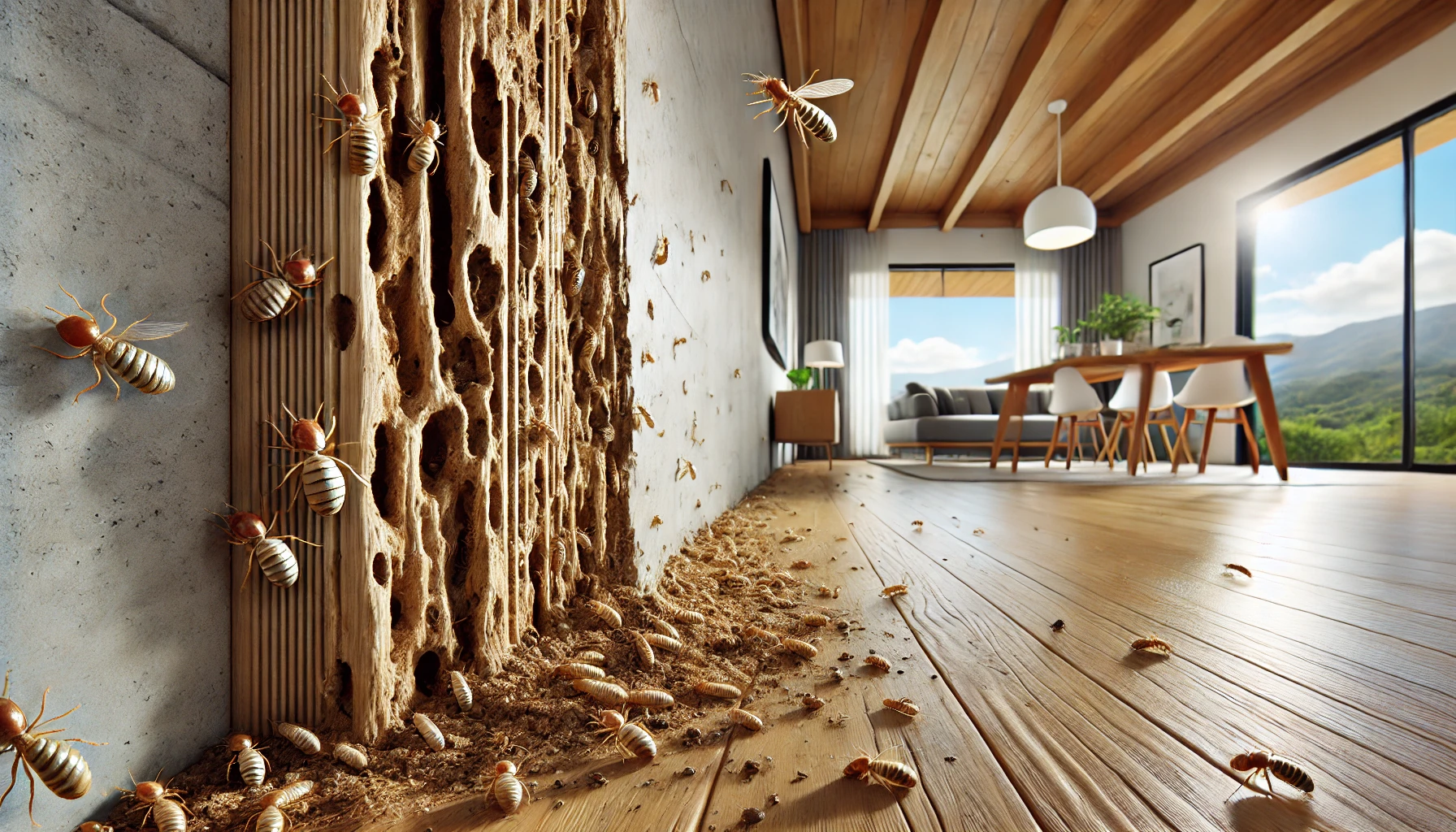 If you’ve ever had to deal with a termite infestation—or even just thought about it—you know how scary it can be. These tiny insects are experts at sneaking into your home, often without you noticing until the damage is already done. And when they do, the repair bills can skyrocket. But here’s the thing: preventing a termite invasion doesn’t have to be complicated or expensive. With the right strategies, you can keep your home safe from these destructive pests.
Let’s talk about how you can prevent termites from invading your home and what steps you can take to protect your investment—and your peace of mind.
If you’ve ever had to deal with a termite infestation—or even just thought about it—you know how scary it can be. These tiny insects are experts at sneaking into your home, often without you noticing until the damage is already done. And when they do, the repair bills can skyrocket. But here’s the thing: preventing a termite invasion doesn’t have to be complicated or expensive. With the right strategies, you can keep your home safe from these destructive pests.
Let’s talk about how you can prevent termites from invading your home and what steps you can take to protect your investment—and your peace of mind.
What Makes Termites Such a Threat?
Termites are like the silent villains in a horror movie—they don’t make a lot of noise until they’ve already done the damage. These wood-feeding insects can destroy your home’s structure from the inside out, leaving your foundation vulnerable. The trouble is, by the time you realize you have a problem, it’s usually too late to catch it early and avoid costly repairs.Termites are small, yes, but they’re mighty. Subterranean termites are the worst offenders in the U.S. They can travel through mud tubes and invade from underground. Drywood termites, on the other hand, sneak in through wooden areas—like beams and framing. And you know what? Both types are tricky to detect until they’ve caused serious damage.
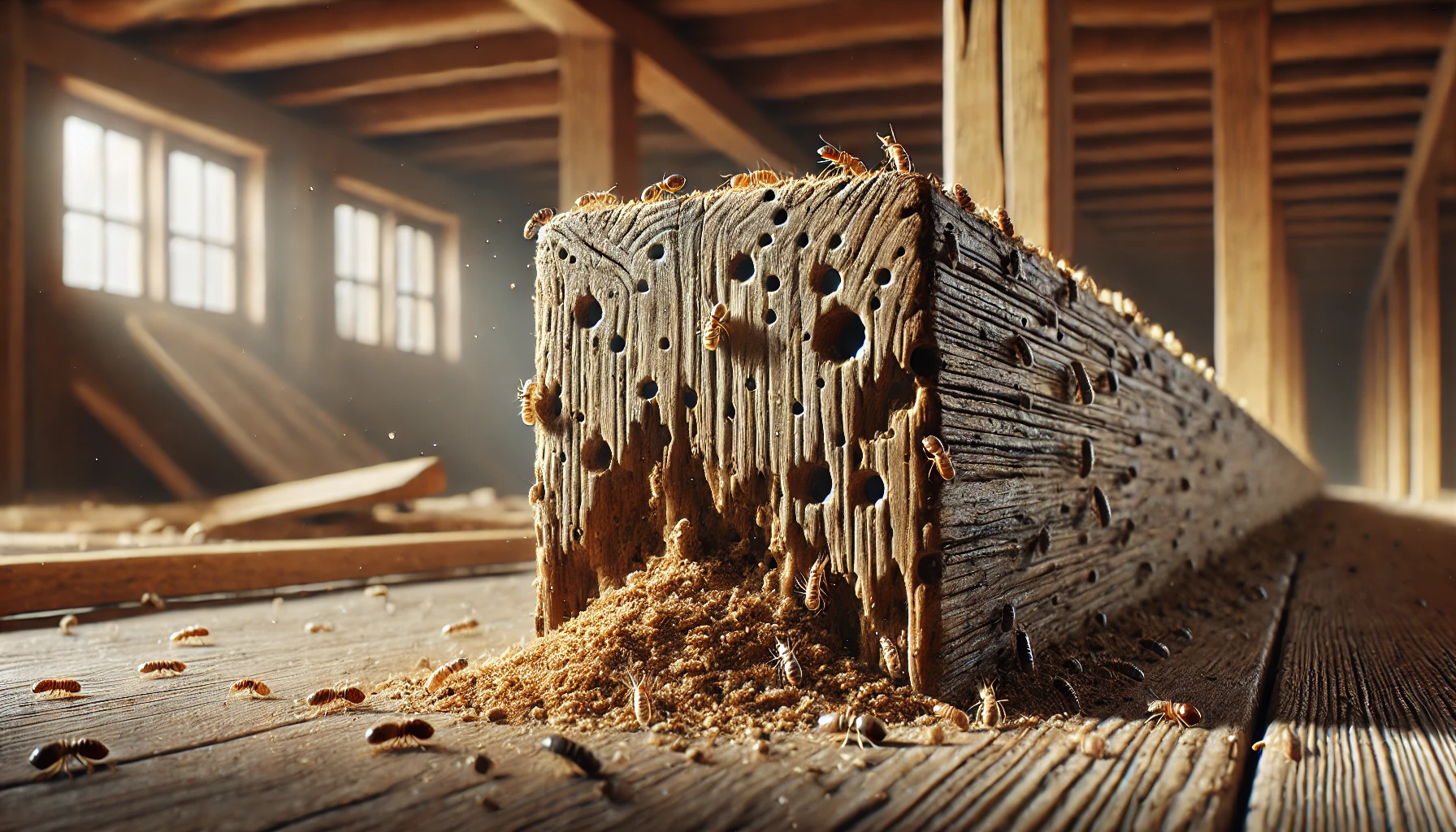

Not getting a solution?
Get your free pest control estimate today!How to Spot a Termite Problem Early
- Before we get into prevention, let’s cover how to identify a termite infestation, because the sooner you catch it, the better.
-
Mud tubes: If you spot small, tube-like structures on your foundation or walls, it’s a pretty big red flag. Subterranean termites build these to travel safely from the soil to your home’s wooden structures.
-
Hollowed-out wood: Tap on wooden beams, floors, or furniture—if it sounds hollow, you might have termites inside.
-
Frass (droppings): Drywood termites leave behind tiny, pellet-shaped droppings. If you see these around wooden furniture or beams, termites could be hiding inside.
-
Swarming: Come springtime, you might see swarms of flying termites, which is their way of reproducing and setting up new colonies. If you notice this, take action fast!
Start with Moisture Control—Because Termites Love Damp Spaces
- Termites are pretty picky about where they live, and they love moisture. The more moisture around your home, the more likely it is to attract termites. So, your first move? Get rid of any excess moisture. It’s easier than it sounds, and it could make all the difference.
-
Fix leaks: This one’s a no-brainer. Check your plumbing and faucets for leaks, and make sure your roof isn’t letting water in. Termites love wet wood, so don’t give them a reason to stick around.
-
Proper drainage: Your home should be able to drain rainwater away from its foundation. Ensure gutters and downspouts are clear and direct water away from the walls.
-
Dehumidify basements: If you have a basement or crawl space, install a dehumidifier. Termites thrive in moist environments, and this will help keep the air dry.
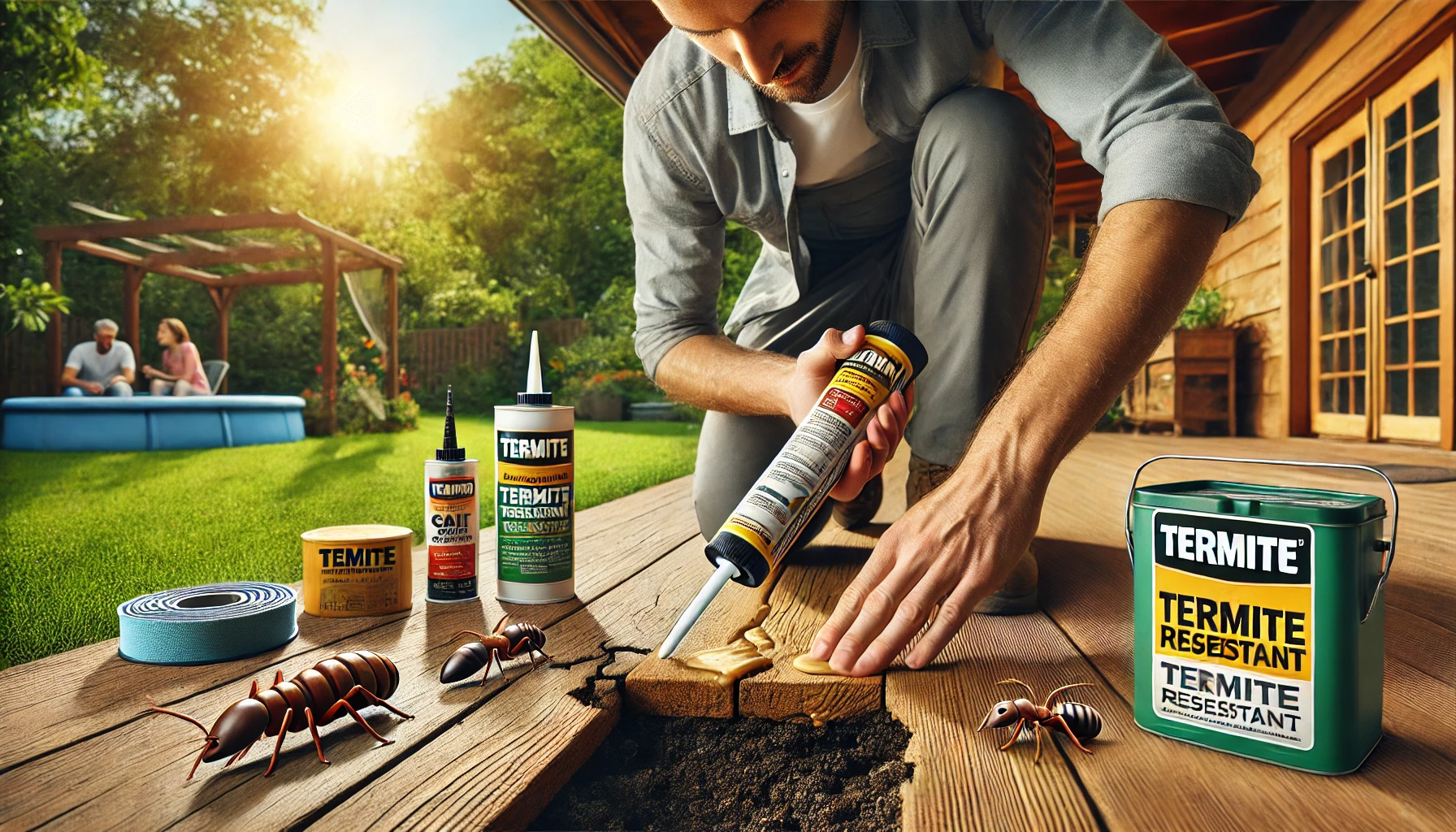
Seal Every Crack—They Can Squeeze Through the Tiniest Gaps
- Termites are sneaky little critters. They don’t need much of an opening to get in. That’s why sealing cracks and gaps around your home is a must-do. Think of it like locking the door—they might still try to get in, but they’ll have a much harder time.
-
Foundation checks: Cracks in your foundation are a major entry point for termites. If you find any, patch them up with caulk or concrete.
-
Doors and windows: Weatherstripping is great for preventing drafts, but it also stops termites from slipping through the cracks. Inspect the seals around your windows and doors to make sure they’re airtight.
-
Utility lines: Check around pipes, wires, and cables where they enter your home. These tiny spaces are perfect for termites to slip through. Seal them properly.
Create a Barrier Around Your Foundation
- Termites need access to wood to feed, and they get it by traveling up from the ground. One effective way to keep them away is to build a barrier that makes it harder for them to reach your house.
-
Gravel or concrete: Adding a layer of gravel or concrete around your foundation makes it a lot harder for termites to tunnel into your home. It’s like creating a fortress, but without the moats.
-
Landscaping: Be mindful of your landscaping. Keep mulch and wood piles away from the foundation of your house. Termites love to hide in these materials and then make their way inside.

Keep Firewood, Mulch, and Other Wood Away from Your Home
- Firewood might look great stacked by the fireplace, but it’s a perfect landing spot for termites. Keeping wood close to your home is like inviting termites to dinner.
-
Store firewood properly: Keep it elevated on a rack or pallet, away from the house. This minimizes the chances that termites will crawl from the woodpile into your foundation.
-
Use less mulch: Mulch may look nice, but it can create a haven for termites. If you use mulch around the house, make sure it’s not piled up directly against your home.
Regular Inspections—Catch Problems Early
- Prevention is great, but inspections are your safety net. Checking your home regularly for signs of termites is one of the best ways to prevent them from causing damage.
-
DIY checks: Walk around your house at least once every season, looking for the signs mentioned earlier (mud tubes, frass, etc.). The earlier you spot a potential problem, the less likely it is to become a full-blown infestation.
-
Professional help: If you’re really serious about prevention, consider scheduling annual termite inspections with a pest control company. They can spot issues you might miss and offer targeted solutions.
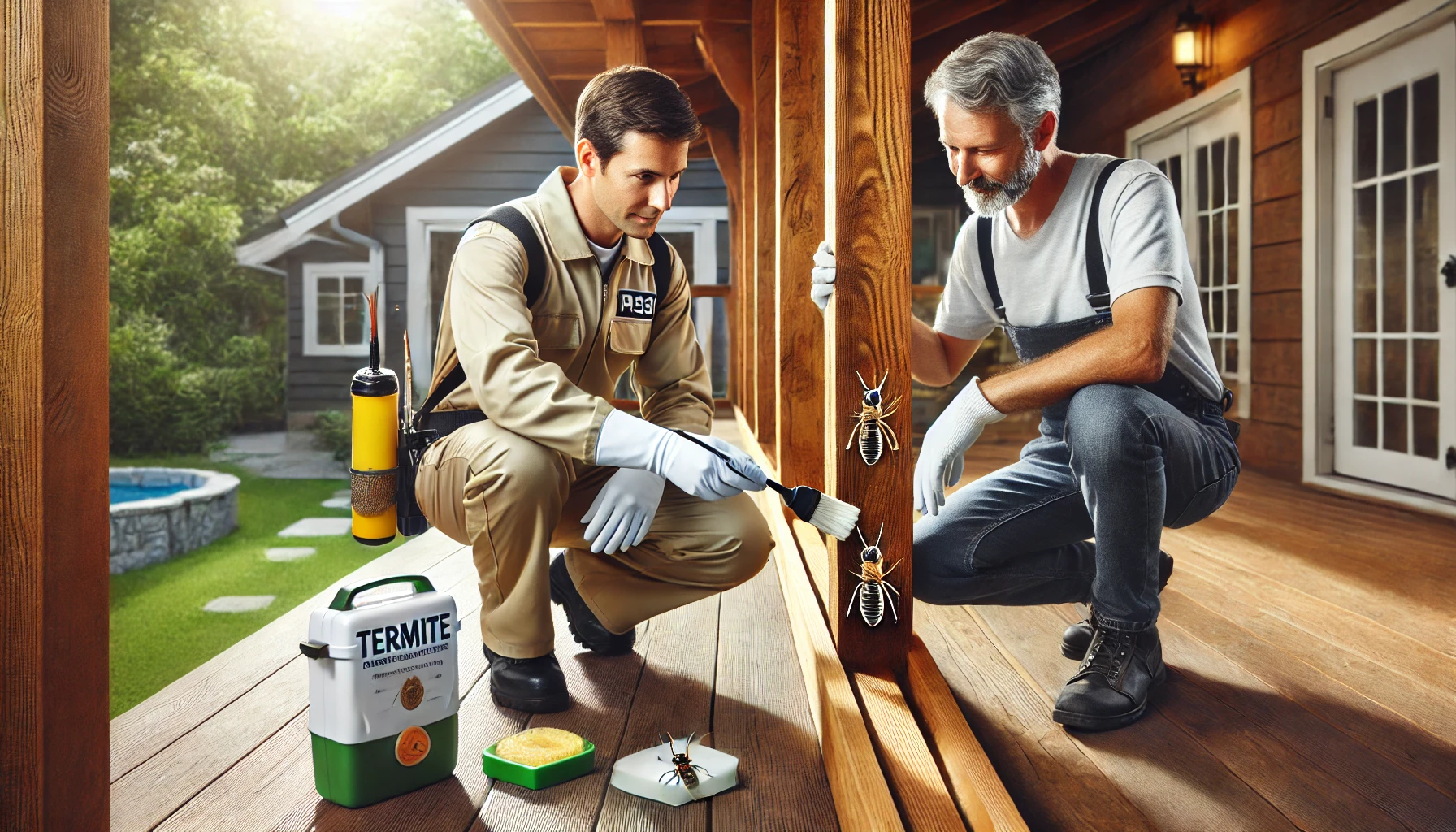
Professional Termite Treatments—Because Sometimes You Need Backup
- If you’re in an area with a high termite risk or if you suspect an infestation, it’s time to call in the pros. Pest control services offer several treatments, such as:
-
Bait stations: These stations contain termite bait that slowly poisons the colony. It’s a long-term solution that targets the entire nest.
-
Barrier treatments: Professionals can apply liquid insecticides around your foundation to create a barrier that repels termites.
-
Pre-construction treatments: If you’re building a new home, talk to the builder about treating the soil before construction. This is the most effective prevention method for brand-new homes.
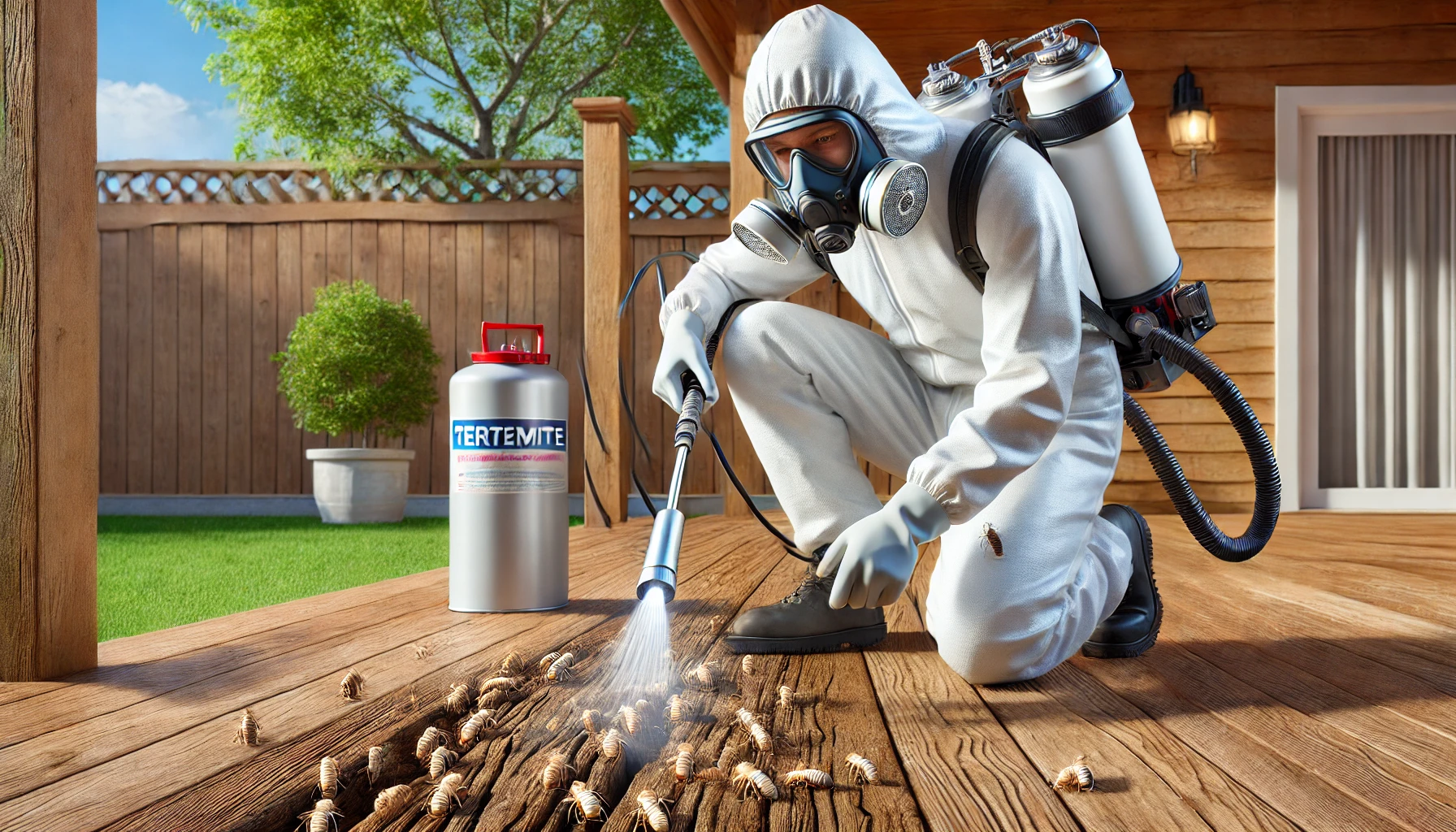 If you feel things have gone out of controlling the termites, it is advised to contact pest control professionals. Our team can provide a customized approach to protect your home effectively.
If you feel things have gone out of controlling the termites, it is advised to contact pest control professionals. Our team can provide a customized approach to protect your home effectively.
Visit our Species, Control, and DIY Guide sections for additional resources on termites and ways to tackle a termites infestation.





